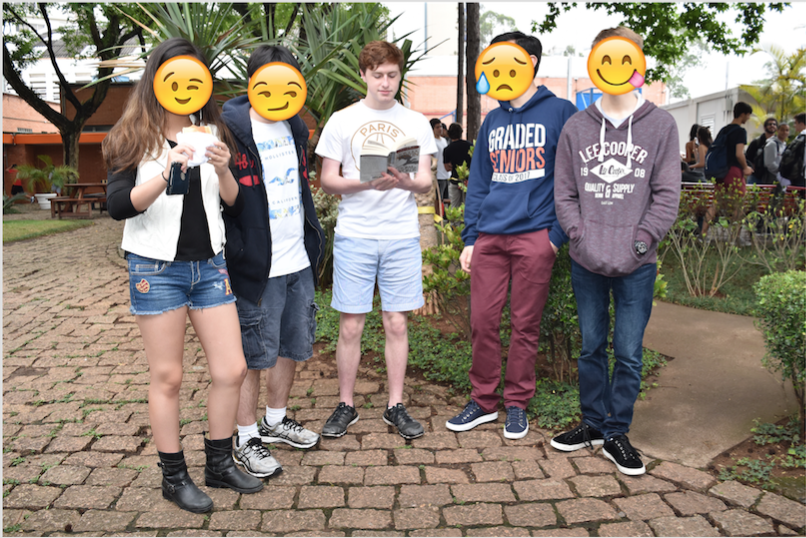Emoji-onal: the loss of tone through Emoticons
Communication always has been, and always will be, a tool to transmit ideas to another being. Since the Stone Age, humans have sought out ways to share ideas with one another, and throughout the years, multiple forms of communication have been formed. From oral communication to the written language, people have developed the capacity necessary to effectively convey even the most abstract thoughts to each other. Alongside this growth of complexity came the increase in efficiency, namely, the greater availability and speed of the information being spread. Beginning with the creation of the written word, then the Gutenberg Press, and, finally, culminating with the creation of a worldwide network that grows increasingly more available to the general public, who knows what else our species has in store for us? To some, the answer lies within our phones. A new step in our ability to communicate efficiently turns out to be a step back in complexity, the compression of thoughts into a single, standardized image: Emojis.
Emojis, or Emoticons, were created as a means to replace features naturally built into regular human conversations, compressing complex ideas into a single image. While emotion is already notoriously difficult to convey, a study published by Elsevier states that it is even more difficult to express emotions through computers. Oral communication relies not only on the actual words being spoken, but also the intonation and body language. There are great difficulties behind conveying tone in online communication, due to the absence of such factors. Some believe Emojis stand as a solution to this problem. Linguist Ben Zimmer argues that, in comparison to Emojis, the written language is lacking, “the punctuation that we use to express emotion. […] We’ve got the question mark and the exclamation point, which don’t get you very far if you want to express things like sarcasm or irony in written form.” To him, Emojis represent a new spectrum of the human language, as they allow complex emotions to be expressed through an icon rather than words. However, can Emojis actually do our emotions justice and properly convey the tone of our voice?
I admit to using Emojis myself, and I do understand their value. I can see how they can move past previous language barriers, or even how they present an effective alternative to the traditional written language. However, by using Emoticons in messages, the reader slowly grows dependent on the image, and, thus, undermines years of linguistic development a person has had to develop. Despite the apparent positives of Emoji-based communication, they provide us a crutch to lean on, one that could counteract their seemingly positive effects on society. As shown in the Journal of Personality and Social Psychology, humans believe their written messages are much clearer than they actually are, leading to confusion in their interpretation. The solution was to compress complex ideas into a single representation, understood by all, yet even so, Emojis present a sort of ambiguity on themselves. They represent a spectrum rather than the relatively clear precision of the written word. The contradiction is that Emojis, in their attempt to simplify communication, might actually complicate it, and not for the better. Writing serves the same purpose as these icons, it just takes substantially more skill to correctly use and present the most precise option in communication. As we are spoon fed meaning through Emojis, something is lost, something precious that took humanity thousands of years to refine: the precision of language. A picture may be worth a thousand words, but a single word carries the weight of thousands of years of human development with it. Many have succumbed to the grips of convenience, favoring efficiency over effort. It is strange to think that declarations of love are being replaced by a cucumber Emoji or an anatomically irregular heart just because we could not bother to try anymore. A linguistic devolution is taking place, where the return to hieroglyphics, or cave paintings, marks the apparent “height” of human communication.
Emojis. One can see them as either the loss of the beauty in precision or the newest step in the evolution of language efficiency; however, it is impossible to deny their influence in today’s society and the strong effects they are having on the newest generations.
Sources: emojipedia.org, creativemarket.com, newrepublic.com, time.com, www.deepdyve.com,

Now banished to the POV section, as Features grew sick of his terrible puns, Lucca will spend his second year in The Talon furthering his plans for pun...

Lord YeJin strikes back once again in The Talon as the Photographer, the Layout Editor, and the Image Master (finally!). Evicting Gabriel Civita, the former...










